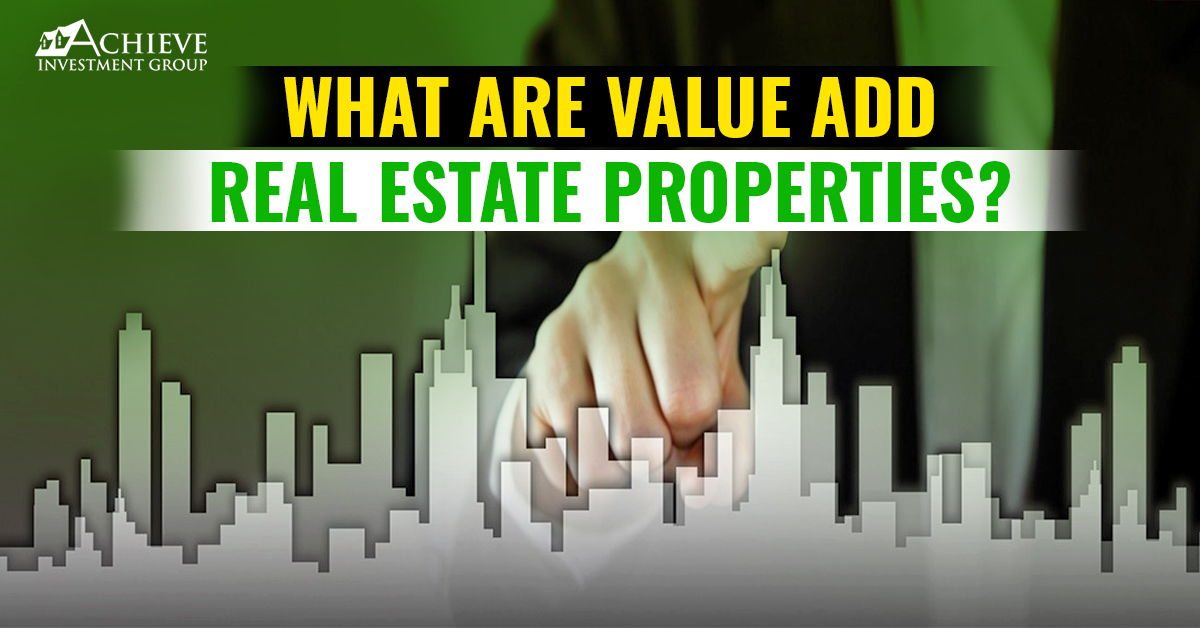
Value add real estate is a term used to describe a real estate investment property that has the potential to be improved, or “added value,” over time. The primary goal of a value add investor is to fix up a property and sell it at a profit.
Value add properties are usually properties that have been foreclosed on or sold at auction by banks or mortgage companies. The value of these properties is often lower than the value of similar homes in your area because they need work before they can be sold to a buyer.
Value Add Properties: Why Buy Them?
If you’re looking for an investment property that will provide income but also give you some room for appreciation, then a value add property may be right for you. If you’re looking to buy a property that needs some TLC but doesn’t require much work, then a value add property may be perfect for your needs as well.
The Difference Between Flipping Houses and Value Adding
Flipping houses is all about fast profits, while value adding is about creating long-term gains. Flippers are in it for the quick turnaround, but value adders are more concerned with building their portfolio over time. A flipper will buy low and sell high; a value adder will buy low, fix up the property, and sell high — or keep it as an investment property if they want to hold onto it. A flipper typically has no interest in holding onto properties long-term because they want to move on to the next deal as quickly as possible.
Characteristics of a Value Add Property?
There are many characteristics of value add real estate property. These are:
- The property can be bought at a discount to its current market value.
- The property can be used as a rental or for commercial purposes.
- The property is located in a good area or nearby a busy street.
- The property has high potential for improvement and redevelopment.
- The property has good access to public utilities like electricity and water supply lines.
- The property has good access to transportation hubs such as airports, ports, railway stations, and bus terminals.
The Benefits of Value Add Real Estate
The benefits of value-added real estate are numerous. The first, and most obvious, is the return on investment. When you buy a property that needs some work, and then put that work into it, you can sell it for more than what you paid for it.
Another benefit is that value-add properties can be easier to finance due to their higher perceived value. If you’re looking to buy a property and flip it, then financing is going to be one of your biggest challenges. A lender will not want to lend money on a property that has been run down by previous owners because they don’t see any potential in it. However, if you’re buying a property that needs some work and putting that work into it before selling, then lenders will see this as an opportunity for them as well as an opportunity for profit for themselves.
Another great benefit of value add real estate is that there are fewer risks involved with these types of properties when compared to other types of investments such as stocks or bonds because they are tangible assets that can be seen physically by anyone who visits them in person or via Google Maps Street View or similar websites online.
Low Down Payment Requirements: Value add investments require low-down payments compared to other types of real estate investments such as single-family homes or multi-family units. For example, you may only need a 10% down payment when buying an apartment building or office building because the value is already higher than the purchase price (or will be after renovations). This makes it easier for investors with limited funds to enter the market and earn a higher return on their money than they would have with other types of properties.
Tax Benefits: Real estate investors can deduct depreciation from their rental income every year as well as deduct any interest paid on mortgages and capital
How Does Value Add Investing Work?
Value add real estate investors’ primary goal is to purchase undervalued properties and increase their value through renovations and strategic improvements. They may also buy properties that need little work but have a lot of potential for growth down the road.
There are two basic types of value add strategies:
Existing Home Value Add Strategy – This type of strategy involves purchasing an existing home at a discount rate, making improvements to increase its marketability, and selling the property at full market value or higher than what you paid for it.
New Construction Value Add Strategy – This type of strategy involves building new homes from scratch or rehabbing existing homes into condos, apartments, or townhomes (depending on local zoning laws).
Bottom Line
Value add real estate is one way that real estate investors can increase their return on investment when buying single-family homes for sale. The process of value-adding covers a range of techniques aimed at increasing the value of a property.
Join Us For A Daily 60-second Coffee Break Series For Passive Investing In Commercial Real Estate With James Kandasamy, The Best-selling Real Estate Author And Mentor.

